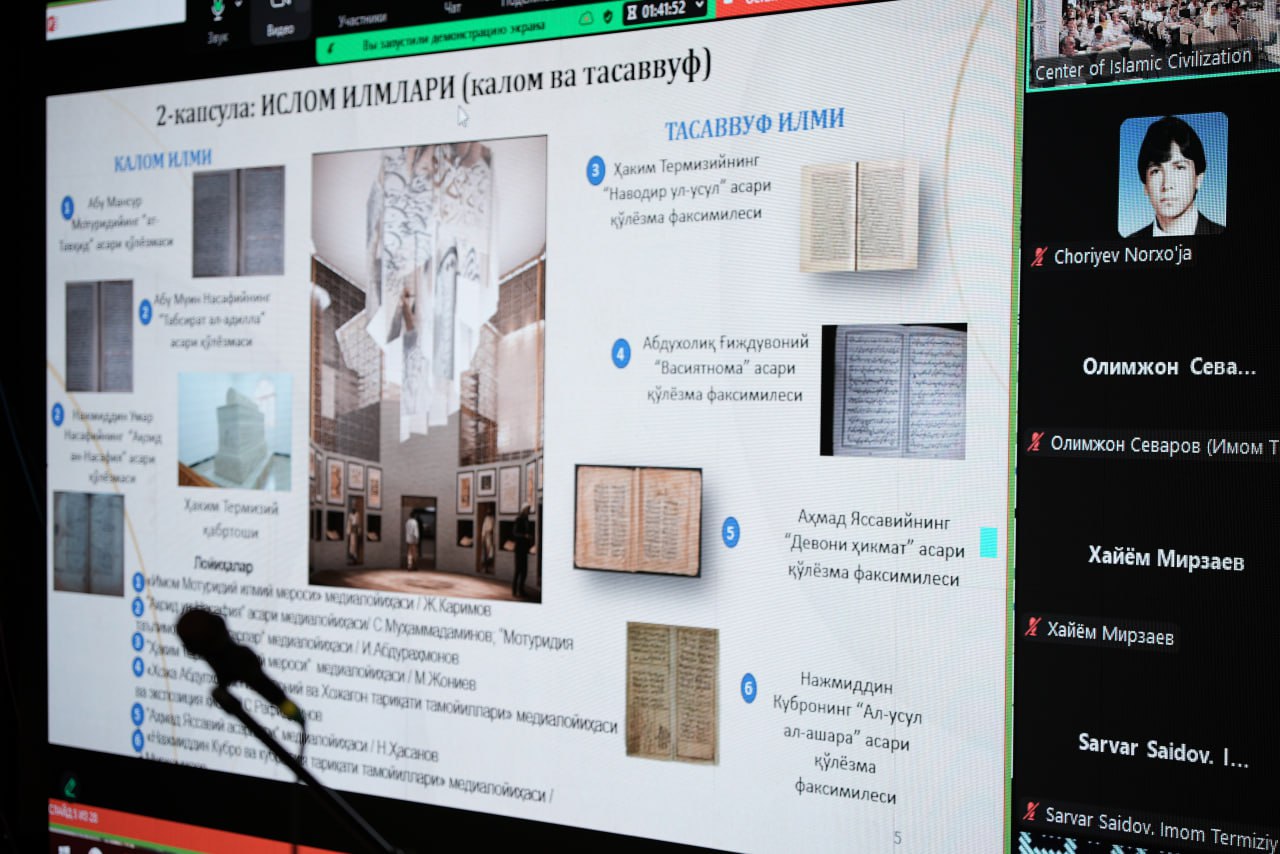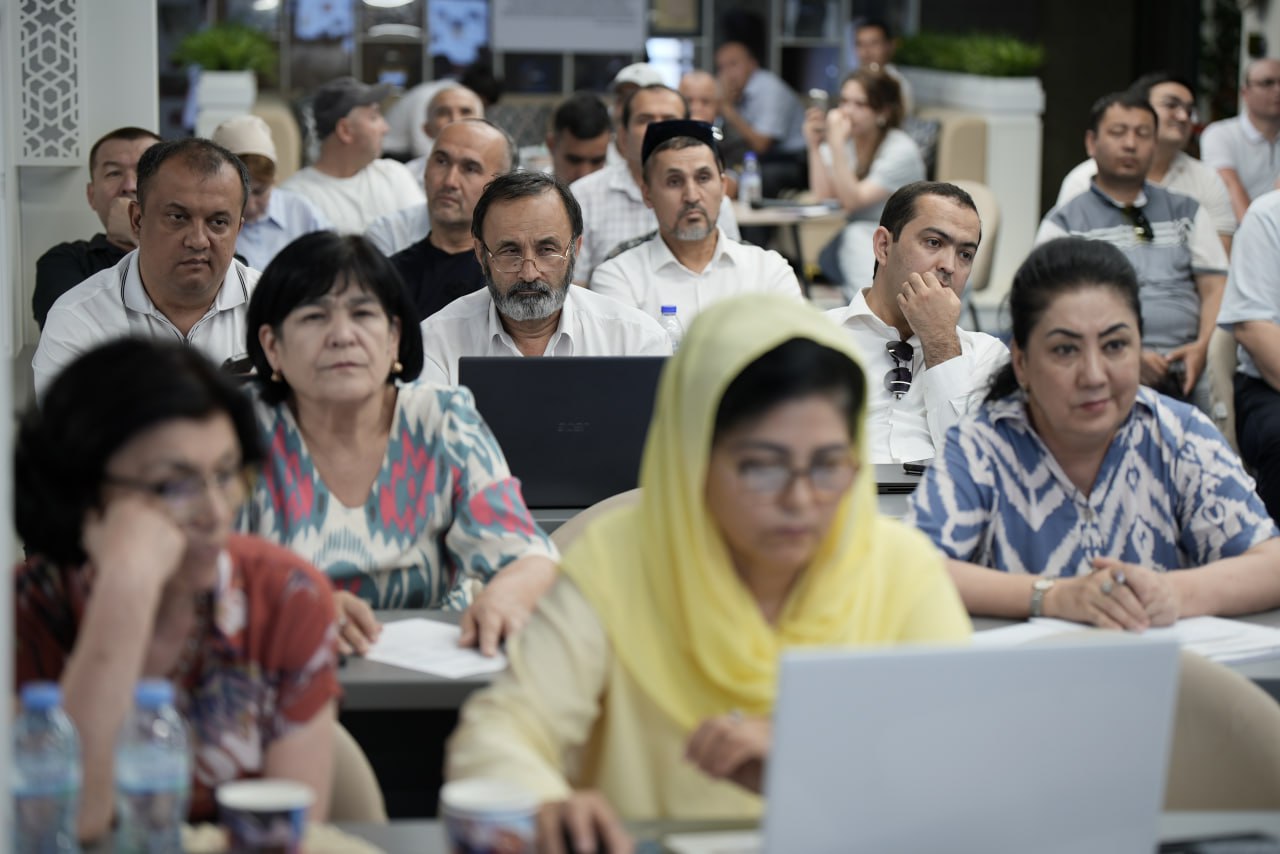A Modern perspective on the great rise of the Center of Islamic Civilization
 The research aimed at enriching the museum content of the Center of Islamic Civilization in Uzbekistan established on the basis of the “Civilizations–Individuals–Discoveries” Concept initiated by the President of the Republic of Uzbekistan, Shavkat Mirziyoyev is progressing rapidly. The implementation of scientific and innovative projects carried out by the Center is currently attracting the attention not only of our nation but also of the entire Muslim world. The “First Renaissance Period” exhibition being created in the Center’s Museum embodies tremendous efforts to comprehensively present our material and spiritual heritage on a scholarly basis and to showcase it in a modern format.
The research aimed at enriching the museum content of the Center of Islamic Civilization in Uzbekistan established on the basis of the “Civilizations–Individuals–Discoveries” Concept initiated by the President of the Republic of Uzbekistan, Shavkat Mirziyoyev is progressing rapidly. The implementation of scientific and innovative projects carried out by the Center is currently attracting the attention not only of our nation but also of the entire Muslim world. The “First Renaissance Period” exhibition being created in the Center’s Museum embodies tremendous efforts to comprehensively present our material and spiritual heritage on a scholarly basis and to showcase it in a modern format.
A dedicated scientific seminar was recently held at the Center of Islamic Civilization, focusing specifically on projects related to this direction. The event brought together renowned scholars, researchers, experts, and designers with the aim of enriching the content of the “First Renaissance Period” exhibition, enhancing the effectiveness of ongoing work, and ensuring scientific and practical coordination.
During the seminar, detailed information was presented regarding the thematic depth, visual solutions, and emotional impact of each composition to be showcased at the Center, with particular emphasis on accelerating their implementation. Project leaders delivered reports on their respective areas of work. Notably, concrete proposals and ideas were discussed for compositions covering various aspects of the First Renaissance Period, such as craftsmanship, architecture, mosques and madrasas, musical instruments, and coinage.
One of the key points emphasized during the seminar was the necessity of transforming the exhibitions not merely into sources of information, but into engaging, impactful, and educational spaces that captivate visitors. To achieve this, the use of multimedia, interactive, and modern visual solutions was placed at the center of scientific discussions.
Within the framework of these discussions, concrete plans were established to avoid repetition in the section, ensure diversity, and fully reflect national identity and historical spirit both visually and thematically.
The Director of the Center of Islamic Civilization, Firdavs Abdukhalikov, also spoke at the seminar, sharing his thoughts on the global significance of this Center being established under the vision and initiative of the President of Uzbekistan, and the vital role it is set to play not only in Uzbekistan but across the entire Islamic world.
“The Center’s activities must be approached with utmost seriousness, and every civilization, historical figure, and discovery should be presented based on rigorous scientific foundations,” stated Director F. Abdukhalikov.
In this regard, specific directions and tasks were set.
One of the key topics to be prominently featured in the exhibition is the history of the earliest madrasas in the region of Mawarannahr and their spiritual significance. According to Abdusattor Jumanazar, Senior Research Fellow at the Institute of Oriental Studies named after Abu Rayhan al-Biruni, madrasas served as the true foundation of the First Renaissance both its intellectual and spiritual force.
“The great figures who emerged during that remarkable era such as Muhammad ibn Musa al-Khwarizmi, Ahmad al-Farghani, Abu Nasr al-Farabi, Imam al-Bukhari, Imam al-Maturidi, Ibn Sina, and Abu Rayhan al-Biruni are vivid examples of this. The madrasas functioned as genuine centers of knowledge and enlightenment behind all their scientific achievements. Special attention is being devoted to these aspects in the exhibition of the Center’s Museum”, said Abdusattor Jumanazar.
Doctor of Philosophy and Professor Bakhtiyor Karimov noted that work is also underway to present the legacy of great thinkers Abu Nasr al-Farabi, Abu Rayhan al-Biruni, and Ibn Sina in a modern format within the exhibition.
“A model of Farabi’s musical instrument, the ‘ud, has been prepared, and we’ve written a script for a video. In addition, facsimile editions of several manuscripts have been produced. There are plans to include original samples in the exhibition as well. The main goal is to create a clear impression in visitors’ minds about the contributions of our great scholars to world civilization”, said scholar Bakhtiyor Karimov.
It is worth noting that, in accordance with the directives of the Head of State regarding Uzbekistan’s megaproject the Center of Islamic Civilization all necessary conditions are being created to comprehensively present the contributions of our ancestors to world civilization, to educate the younger generation in the spirit of devotion to this great historical heritage, to organize future scientific discussions and debates at this unique modern complex, and to promote relevant ideas and discoveries while developing new scholarly content to further enrich and perfect its meaning and substance.

In line with these objectives, more than 2,000 local and international scholars and experts have joined forces to enrich the Center’s exhibition with meaningful content, historical artifacts, and models. Over 800 projects have been developed to be implemented in three stages. The first phase is currently underway, with work progressing rapidly on more than 400 projects in consultation with members of the Scientific Council.
In conclusion, the “First Renaissance Period” exhibition at the Center of Islamic Civilization represents a unique effort to harmonize historical heritage with modern science, technology, and aesthetics.
Most read

Over 100 experts from more than 20 countries of the world are in Tashkent!

The Center for Islamic Civilization – a global platform leading towards enlightenment

The museum of the Center for Islamic Civilization in Uzbekistan has been further enriched: unique artifacts from different parts of the world have been presented as gifts











